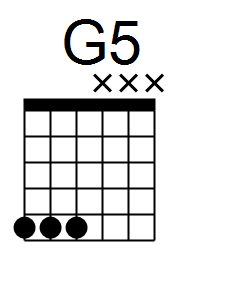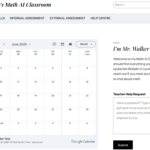In metal and progressive rock, there is no more classic sound than that of the humble power chord. And power chords never sound better than when played on a tuned-down guitar.
Alternate Tunings
There exist several alternative tunings to the “standard tuning” of EADGBG; some of these include tuning down every string by a half step or completely re-arranging the strings to form new scales and intervals. While this produces a pretty unique sound, it makes learning guitar pretty tough.
That’s where the most popular alternative tuning comes in: Drop D. Drop D is the same as standard tuning with the exception of tuning the E string (the thickest string) down to D. This creates a bassy growl to your lowest string that is synonymous with most metal music. It also allows you to play power chords far easier.
Power Chords
In standard tuning, power chords are simply the root, the fifth, and the octave.

The chord shown above is the G power chord and its “technical” chord name is G5 because it is simply the G note with its fifth. To make this a “full” G chord you would need to add the third which makes this chord a totally different shape due to the note availability and finger placement.
But what about drop D? Tune that E string down and you’ve got yourself a mighty powerful chord.

Now that’s an easy to play chord! The nice thing about this chord is that you can play it anywhere on the dropped D string (this is true for standard tuning as well). This is what makes it so easy to play power chords with any root you want.
Variations on Power Chords
I won’t really get into it but there are alternative power chords that have some shifting notes that I’ve been experimenting with in my riffing.
Riffs!
As above, I’ve been doing some riffing with intervals and power chords and I’ll leave those here when I’m able to record them later today.
Update:
The riffs below are rooted on the C note, features its major 3rd, and is finished with an F power chord. The second of the two riffs features some harmonics which are the major 5th of C.
This last riff has some of those alternative power chords mentioned above.






pgosse
November 13, 2020 — 7:57 pm
Sounding great, Zach. Every time I heard someone play power chords I remember the day someone told me the Black Sabbath guitarist only had his index and pinky fingers on his fretting hand and that’s why so many of their songs use power chords. I do not know if this is true, but since then, power chords have always seemed that much more appealing.
zwalker
November 19, 2020 — 11:51 am
Yeah, I don’t know if that’s true either but it explains a lot about Black Sabbath!